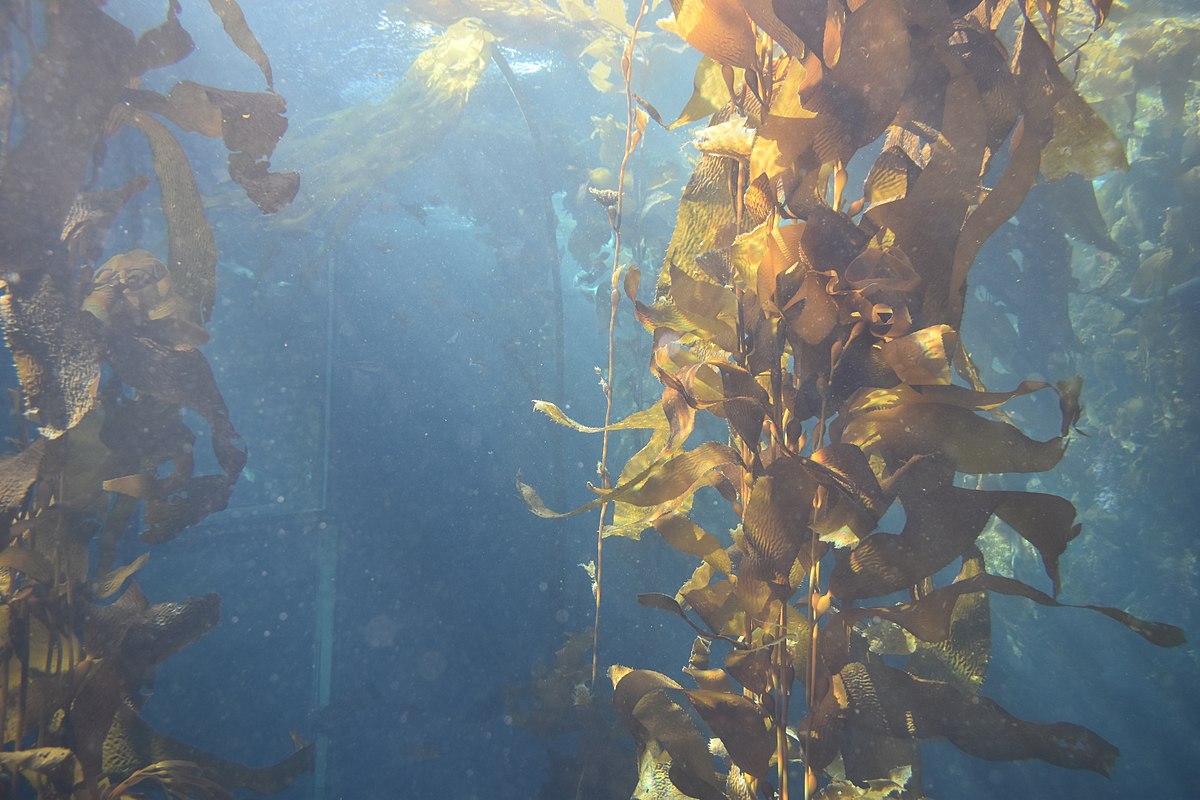Filbee-Dexter, Karen, and Thomas Wernberg. “Substantial blue carbon in overlooked Australian kelp forests.” Scientific Reports 10.1 (2020): 1-6. https://doi.org/10.1038/s41598-020-69258-7
Blue Carbon and Kelp:
According to NOAA, blue carbon is “the term for carbon captured by the world’s ocean and coastal ecosystems.” Many marine plants and animals help with the process of carbon capture; anything from cocoliths to turtles can influence how much carbon is captured and sequestered in the world’s oceans. The idea of blue carbon is a somewhat recent development, and as such, there is still much research to be done on just how much blue carbon can be stored in the ocean. This recent study by Filbee-Dexter and Wernberg suggests that current numbers vastly underestimate how much blue carbon is stored in coastal ecosystems. While most blue carbon budgets focus on salt marshes, seagrasses and mangroves, the authors of this paper advocate for adding another ecosystem to the list: kelp forests.
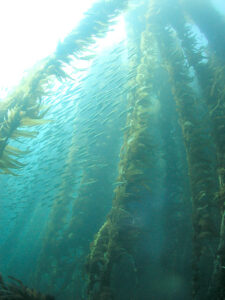
To some, kelp forests might seem like little more than an overgrown patch of seaweed, but in reality, kelp forests play many important roles in coastal ecosystems. In addition to providing shelter and food for many marine species, kelp forests need a lot of carbon to grow, making them vital resources for sequestering carbon from the atmosphere and mitigating the effects of climate change. However, kelp forests face significant threats from ocean warming, pollution, and overgrazing from urchins, which turns kelp forests into ecological deserts. While scientists know about the carbon sequestering potential of kelp forests, there are fewer who directly include it in a global blue carbon budget. The authors try to rectify this oversight by creating a detailed blue carbon budget of Australia’s coastal waters that includes the country’s vast kelp forests.
The study:
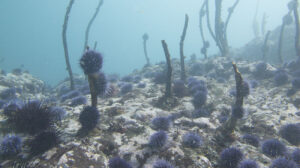
In order to create an accurate estimate for how much carbon kelp forests capture and store, the authors first estimated how much of Australia’s coasts are surrounded by kelp forests (see figure 1). Once they calculated an estimate, they needed to measure how much kelp biomass comprised the kelp forest. Rather than count every single stalk of kelp, the authors opted to take samples from over 500 plots surrounding the Great Southern Reef and measured the weight of over 1,500 stalks of kelp. After calculating plant biomass, they calculated the amount of carbon in the forests using data from previous studies, which found that about 30% of the plant biomass was carbon. From these combined data, they created an estimate of how much carbon is stored by the kelp forests surrounding the continent.
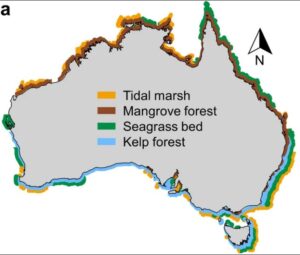
The Results:
The number the authors came up with was staggering. Based on their calculations, they estimated that about 11-13% of the blue carbon in Australia’s waters was stored in kelp forests. They were also surprised to find that kelp forests accounted for 27-34% of carbon sequestration each year. When put in context of the global blue carbon budget, Australian kelp forests account for about 3% the total. Check out the graph below to see how kelp forests stack up against other blue carbon stocks in Australia.
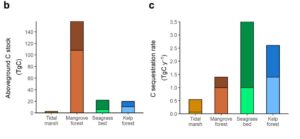
What’s Next?
The rest of the world’s kelp forests have yet to be assessed, but the authors remain hopeful that this research will help implement policies designed to protect kelp forests. With the many threats kelp forests face, they are highly susceptible to deterioration. The loss of kelp forests not only accelerates the loss of biodiversity, but also the release of carbon back into the ecosystem, and eventually the atmosphere. The authors created this chart shows how kelp forests responded to stressors in the past and projects how they may respond to the increased stress of warming in the future. Based on a previous study, around 89% of carbon stored in kelp is released and remineralized after the loss of a kelp forest. This doesn’t bode well, as the authors expect Australia will lose almost half of their kelp forests by 2100, primarily due to ocean warming. In response to this dire statistic, the authors urge scientists to create a more accurate blue carbon budget and policymakers to introduce plans to protect not only kelp forests, but other ecosystems that store blue carbon as well.
I recently graduated with a degree in Environmental Earth Science and Sustainability from Miami University of Ohio, and I recently started my MSc at the University of Victoria. While my undergraduate research focused on biogeochemical cycles in lakes and streams, I am excited to pursue my MSc in the El-Sabaawi Lab and explore how urbanization might impact fisheries. In my free time, I love to travel to somewhere off the beaten path, read fantasy novels, try new recipes, and plan my next trip to the ocean.

